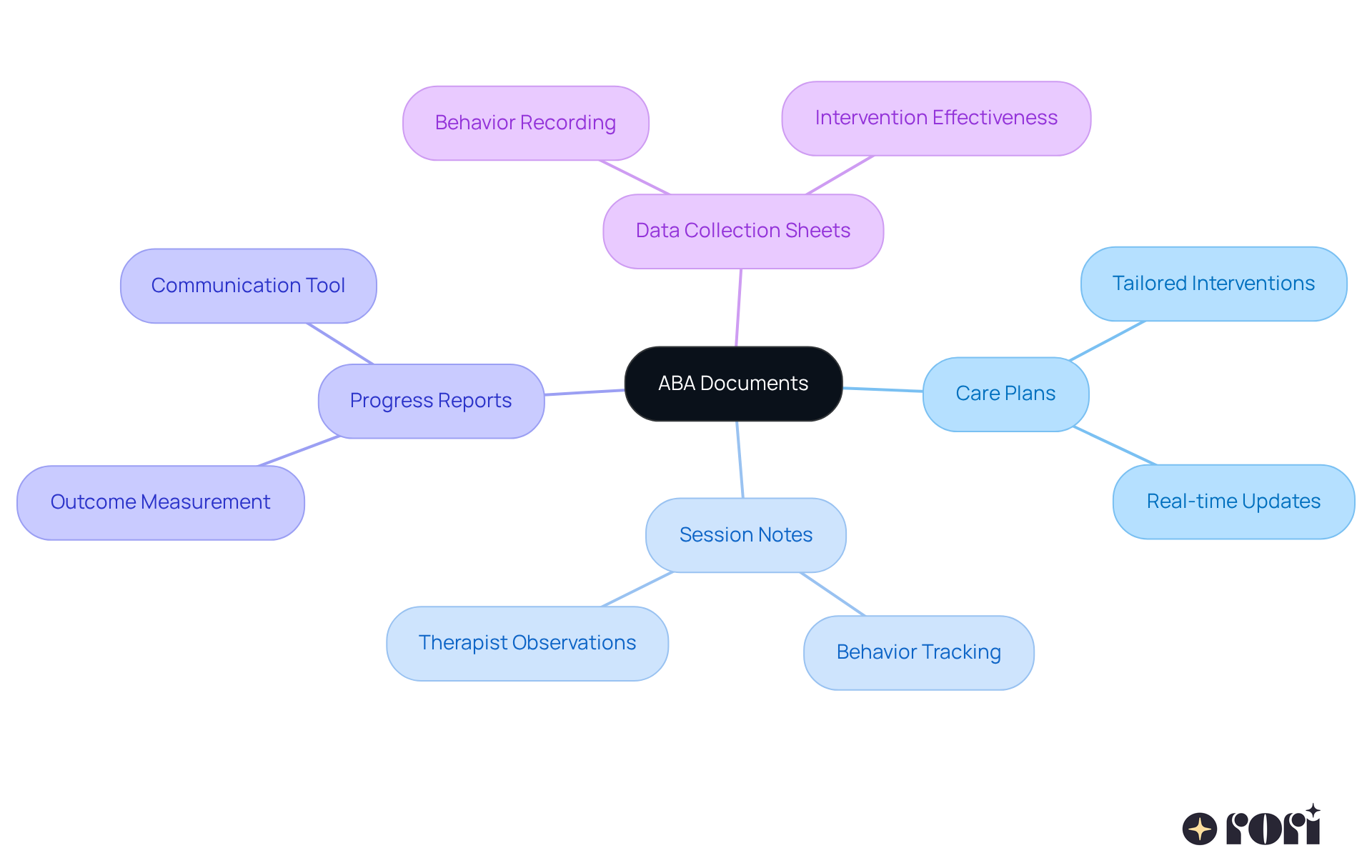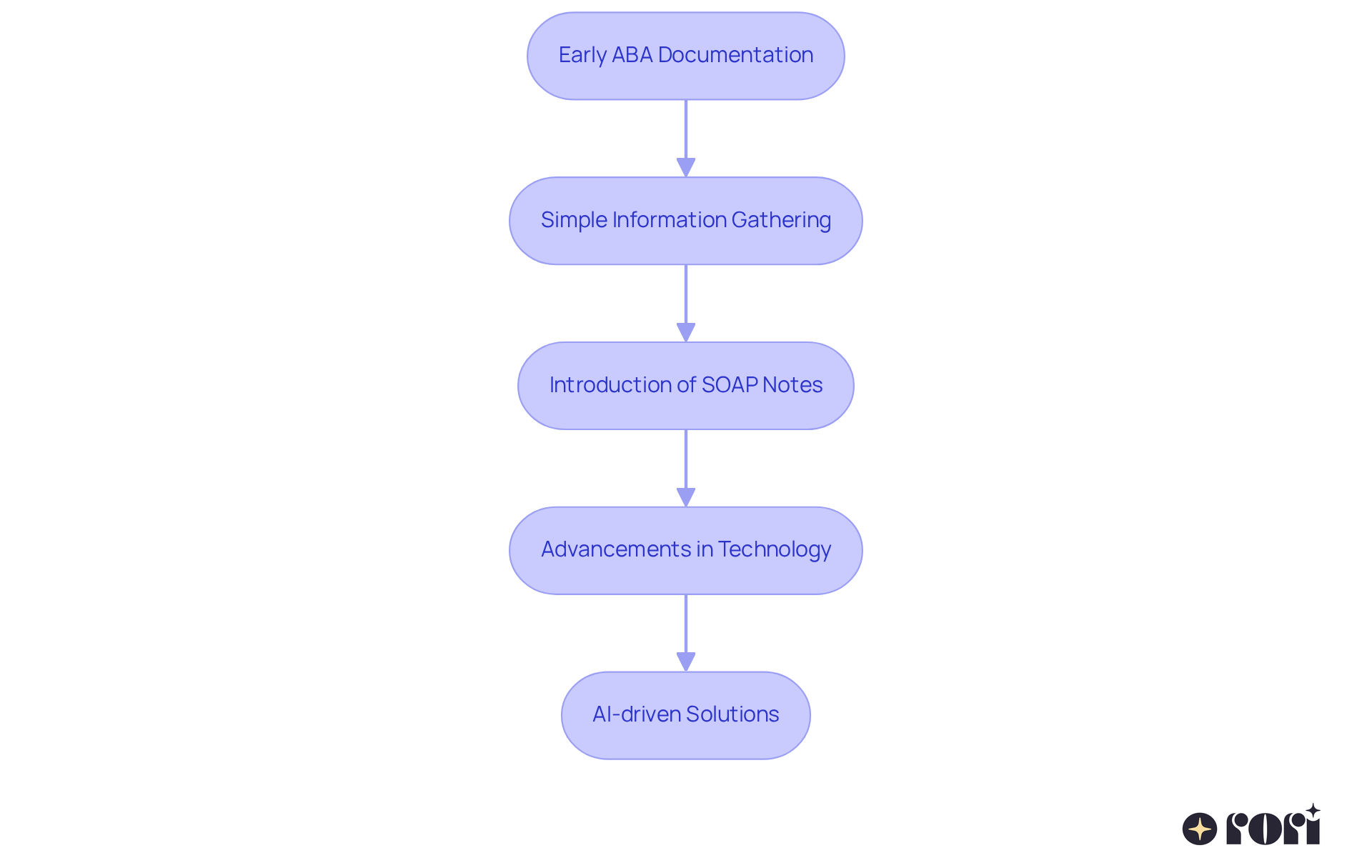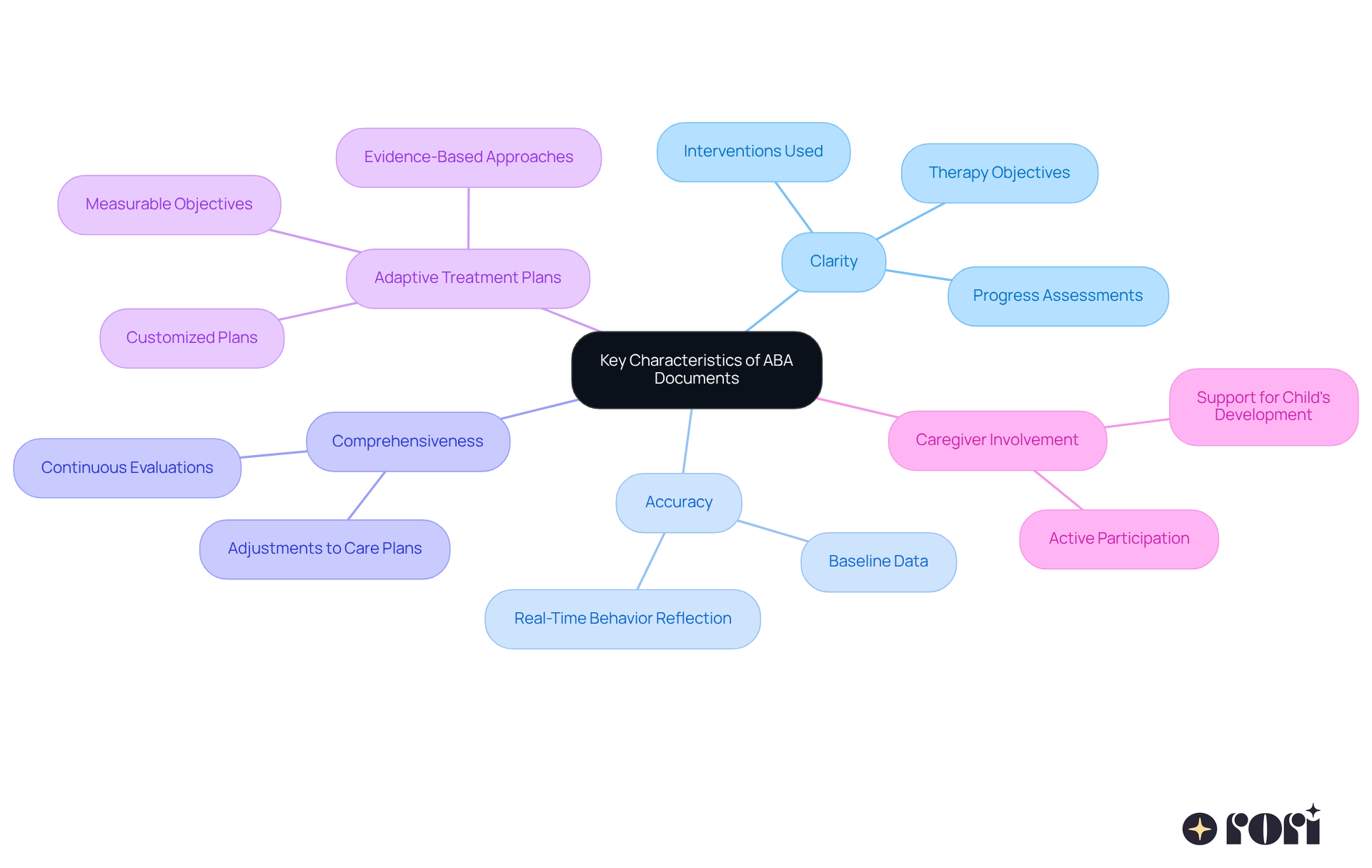ABA documents are such important tools in Applied Behavior Analysis (ABA) therapy! They help us keep track of and communicate the progress of individuals, especially those with autism, through personalized care plans and detailed records. These documents make it easier for therapists, families, and caregivers to connect and share insights. Plus, with advancements in technology—like AI-driven solutions—these tools are becoming even more efficient and responsive to individual needs.
Let’s explore this together! By using ABA documents, we can create a supportive environment that truly understands and meets the unique needs of our loved ones. It’s all about fostering effective communication and collaboration. So, as we dive deeper into this topic, think about how these tools can make a difference in your journey. We’re here to help you every step of the way!
In the world of autism care, we can’t underestimate how crucial documentation is! ABA documents are truly the backbone of Applied Behavior Analysis therapy. They provide valuable insights into a child’s progress, tailoring interventions to fit their unique needs. These records not only boost communication among therapists, families, and caregivers but also help ensure that treatment plans are always updated and responsive to real-time data.
As technology continues to evolve, it’s important to think about how these changes affect the effectiveness and adaptability of ABA documents. After all, we want the best outcomes for individuals with autism, right? Let’s explore this together and see how we can foster positive changes!
The different types of written records we use in Applied Behavior Analysis (ABA) therapy are referred to as ABA documents. They help us monitor, evaluate, and share how a young person is progressing and what their care plans look like. These ABA documents include:
Their main goal? To make sure therapy is tailored to each young person's unique needs, while also promoting effective communication among therapists, families, and everyone involved in their care.
With the latest advancements in AI technology, creating progress reports has become a breeze! This automation frees up 50% more time for youth care, which is fantastic. It allows us to continuously update care plans based on real-time information gathered during clinical sessions. This means interventions can be adapted and responsive to each individual's needs. By recording behaviors and interventions, ABA documents are crucial for assessing the effectiveness of strategies and making necessary adjustments. This ultimately highlights the importance of early intensive behavioral intervention (EIBI) in enhancing learning, verbal, and social skills in individuals with autism.
Let’s explore this together! If you have any thoughts or experiences to share, we’d love to hear from you. Your journey is important to us, and we’re here to help you every step of the way!

In the world of autism care, your trusty guides on this journey are the ABA documents. They help clinicians create personalized treatment plans tailored to each child’s unique needs. By keeping track of interventions and progress, these records empower therapists to discover what works best and adjust their methods when needed.
But that’s not all! ABA documents also promote teamwork among parents, therapists, and other professionals. This means everyone is on the same page, working together to support your child's growth. 🌱 This collaborative approach is essential for achieving the positive outcomes we all hope for in autism care.
Let’s explore this together and see how these tools can make a difference in your child’s development!
![]()
The origins of ABA documents can be traced back to the early days of Applied Behavior Analysis, which blossomed in the mid-20th century. Initially, documentation methods were quite simple, focusing mainly on gathering basic information. But as the field grew, so did the complexity and sophistication of the methods documented in ABA documents.
The introduction of standardized formats, like the SOAP (Subjective, Objective, Assessment, Plan) note, really changed the game for therapists. It transformed how they recorded and shared information. Over the years, advancements in technology have also reshaped ABA documents, facilitating easier collection and effective analysis of information.
Nowadays, with AI-driven solutions, clinicians can automatically generate progress reports. This innovation not only frees up 50% more time for youth treatment but also ensures that information management complies with HIPAA regulations. This means secure storage, anonymization, and even options for post-analysis deletion.
As we continue to evolve in this field, the use of advanced models like LLAMA 3 and GPT-4v in processing information shows our ongoing commitment to improving the quality of care for youth with autism. Let’s explore this together and see how these changes can help us support our children better!

Clarity, accuracy, and comprehensiveness are key when it comes to ABA documents! Effective ABA documents should clearly outline therapy objectives, the specific interventions used, and the information gathered to assess progress. It’s so important that these ABA documents accurately reflect the child's behaviors and responses to interventions in real-time.
Thorough documentation includes all elements of the therapy process, like baseline data, continuous evaluations, and adjustments to care plans. By incorporating these characteristics, ABA documents serve not only to help everyone communicate effectively but also as valuable tools for tracking progress and ensuring accountability in autism care.
Let’s not forget about adaptive treatment plans! Developed by qualified behavior analysts, these plans are crucial for fostering positive behavior changes and skill acquisition. Each plan is customized to meet the unique needs of the individual, focusing on measurable objectives and evidence-based approaches. This is especially important for effective early intensive behavioral intervention (EIBI), which aims to enhance learning, verbal, and social skills in individuals with autism.
The behavior care engine plays a vital role in updating these intervention plans based on progress data. This ensures that therapy remains responsive to the individual’s evolving needs. Plus, active caregiver involvement is essential in this process. It not only enhances the effectiveness of the interventions but also supports the child’s development.
We’re here to help you every step of the way! Let’s explore this together and ensure that your child receives the best care possible.

ABA documents are truly essential in the realm of autism care, acting as vital tools that help monitor and enhance the therapeutic journey. By providing a structured way to document each child's unique progress and treatment plans, these records ensure that interventions are tailored to individual needs. This fosters effective communication among therapists, families, and other caregivers, creating a supportive network.
Throughout our discussion, we've highlighted the importance of different types of ABA documents—like care plans, session notes, and progress reports. These aren’t just pieces of paper; they track how well interventions are working and adapt in real-time, thanks to amazing advancements in technology, including AI-driven solutions. This evolution in documentation practices shows a strong commitment to improving care and outcomes for individuals with autism, ensuring that every child's journey is supported with precision and responsiveness.
When we reflect on the significance of ABA documents, it’s clear they are more than mere records; they are crucial components of a collaborative approach to autism treatment. As the field continues to grow, embracing innovations and best practices in documentation will only enhance the quality of care we provide. Engaging with these tools and understanding their impact can empower caregivers and professionals alike. Together, we can lead to more effective support for children on the autism spectrum. Let’s explore this journey together!
What are ABA documents?
ABA documents are written records used in Applied Behavior Analysis therapy to monitor, evaluate, and share a young person's progress and care plans.
What types of documents are included in ABA documents?
The types of ABA documents include care plans, session notes, progress reports, and data collection sheets.
What is the main purpose of ABA documents?
The main purpose of ABA documents is to tailor therapy to each young person's unique needs and promote effective communication among therapists, families, and all involved in their care.
How has AI technology impacted the creation of progress reports in ABA therapy?
AI technology has automated the creation of progress reports, freeing up 50% more time for youth care and allowing for continuous updates to care plans based on real-time information.
Why are ABA documents important for assessing therapy effectiveness?
ABA documents are crucial for recording behaviors and interventions, which helps assess the effectiveness of strategies and make necessary adjustments to improve therapy outcomes.
What role do ABA documents play in early intensive behavioral intervention (EIBI)?
ABA documents highlight the importance of EIBI in enhancing learning, verbal, and social skills in individuals with autism by facilitating tailored interventions and effective monitoring.